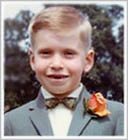An Illustrated History of Old Sutton in St Helens, Lancashire
Part 59 (of 95 parts) - Memories of Sutton Part 9
Compiled by Stephen Wainwright ©MMXX
'Memories of Sutton Leach' by Harry Hickson
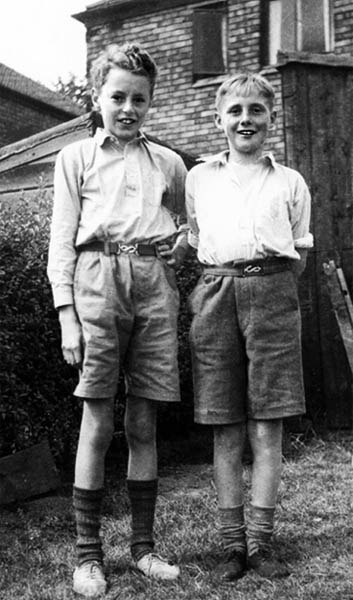
Foy (rt) - note the belts which most lads had then

Start of the school holidays c.1948/9 with Malcolm Foy (right) - note the belts which most lads had at that time
Many years later after I'd emigrated to Australia, a chap that worked for me who had ancestors from Earlestown, went on a European Tour after retirement. During the tour he went into a War History Museum in Germany, and saw a flight plan used by the Luftwaffe to bomb Liverpool, and which included details of how to arrive at the target. The key on the flight plan, was the flight up from the South until they saw the Nine Arches at the Sankey Viaduct, with instructions to then turn West and follow the railway line into Liverpool.
In about early 1945, Harry Twist who lived in Leach Lane opposite the Wash (and who had a son Graham who played RU for England in the forwards), had German POW's helping him on his farm. They used to sit on the pavement at about 5-45pm waiting for the truck to come and pick them up. I can remember wondering if any of them had been in the planes that had come over in the Air Raids some years before.
He had married into the Garton farming family, and farmed the land down to Wheatsheaf Avenue, up to and along the Widnes Railway line. Along with his brother, and a builder named Albert Coates, he had built 26 houses in Old Mill Avenue, 20 in Crane Avenue, and quite a few in Mill Lane in the early to mid 1930s. In about 1937, he built five large stylish detached houses in Leach Lane, the first no. 247 was occupied by his sister Rebecca (and so it was known by us as Rebecca's) and her husband John Lee.
The next house was the Abbotts Farm itself, which was set back off the road up a wide drive. We saw this as a very generous Farm House with a barn, along with other buildings spread out around it. The farm had been there for many years and is shown on Greenwood’s 1818 map of Lancashire. The other four detached houses followed on after the farm towards Clock Face.
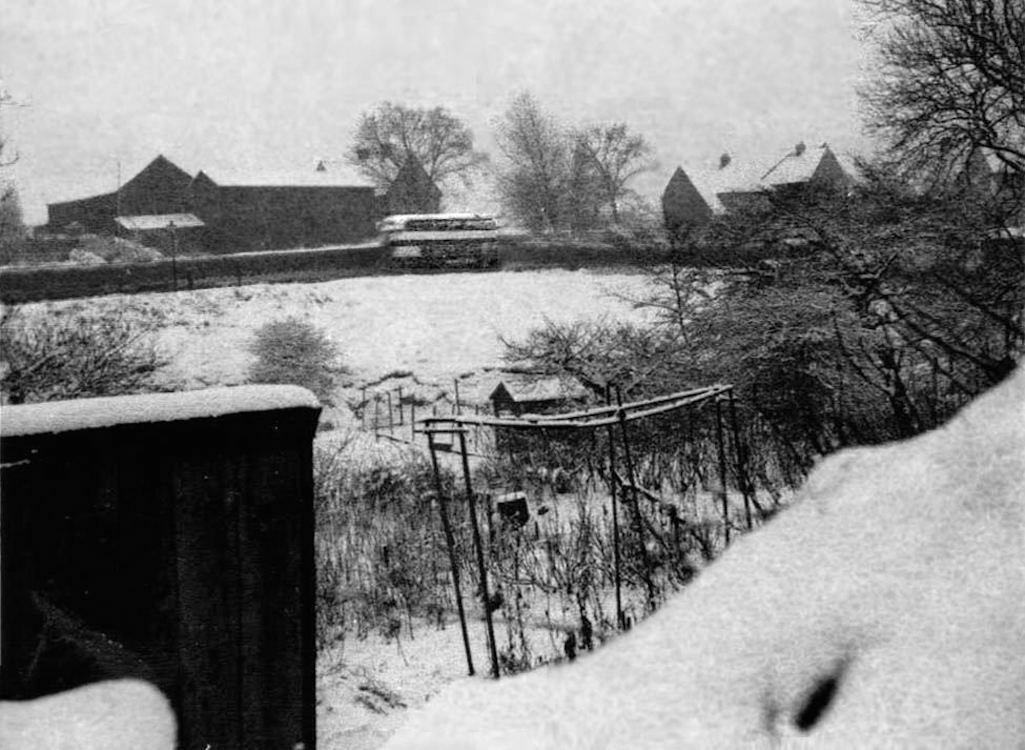
Harry Twist's large house, barn and other buildings in 1947 - contributed by Harry Hickson

Harry Twist's large house, barn and other buildings pictured in 1947

Harry Twist's house and barn in 1947
During the war, the field alongside the brook (that linked the top Mill Lane dam with the bottom one), was cultivated by people from all round the area for growing extra vegetables, and they watered them from the brook. A 'swap' system was set up to get the items you wanted most, because of the rationing. For example, I would cycle all over the place (once to Hard Lane), to swap our eggs for something my mother wanted, usually cheese, and could you believe, some people wanted used tea leaves!
Winter, however, cut back on this fresh produce, but people knew the art of preservation, and generally got through it reasonably well and every boy and girl at that time appreciated the way their parents managed. An amusing feature of the period was those men that picked up the used cigarette 'stumps' that lay on the pavements or gutters of our streets. They emptied the small amount of tar saturated tobacco out of them and then made a full cigarette using a little roller and a new cigarette paper, producing what we called a 'kerbstone blend'.
The brook offered great fun for us all, jumping across its various widths, fishing, playing cricket and blackberrying on its banks. The shortest way to Leach Lane, especially in winter when you could sledge down the steep bank on that side near the 'Wash', was down the gardens from Old Mill Avenue, across the first brook onto Josh Leather's Poultry establishment. He lived next door to Mr Tickle, the shoe, boot, and clog repairer, who had a little shop next to his house just in the Intersection Bridge part of Leach Lane, and he had a very large number of laying hens in big sheds between the two brooks.
These were guarded by a serious old English sheepdog which had about a five foot-long light chain attached to his collar, with the other end attached by a ring to a wire that ran the length of the establishment. If you wanted to cross to Leach Lane you waited until the dog was in its kennel, and you made a run for it. The dog then raced down its well-worn path over the little bridge and down to the hen sheds. In reality it was less dramatic than it sounds, because the dog couldn't stray too far from the wire path, but it was fun for us to risk it!
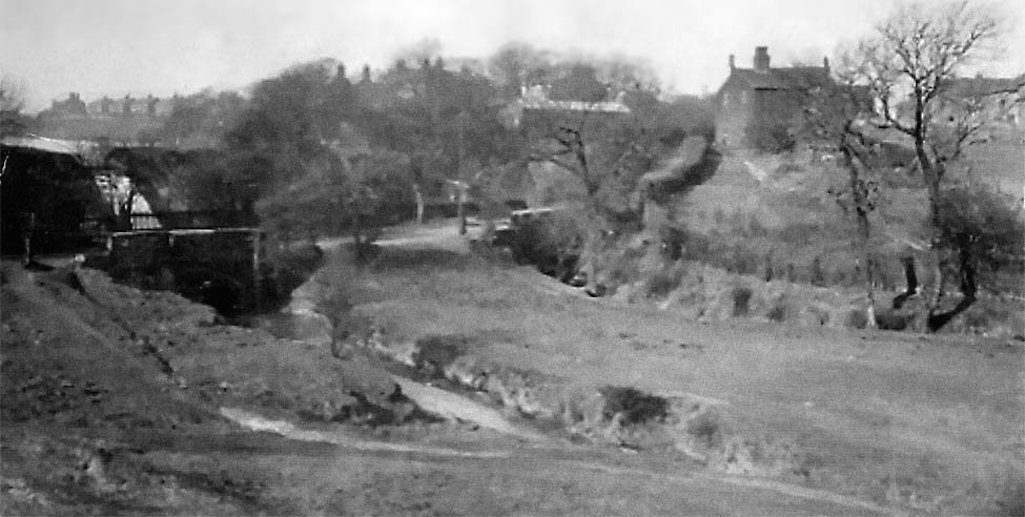
Taken from Leach Lane the second brook from the old mill sluice is shown on the right - contributed by Harry Hickson

From Leach Lane - the second brook from the old mill sluice is on the right

Picture taken from Leach Lane
As described in other Memories, the Top Dam, its waterfall and old mill sluice gate etc was a magnet to lads, with the open dam stretching to Clock Face Road being quite a sight. There were boat houses (just rowing boats), at the bottom of the large detached houses that we knew as Mill Lodge, Millersdale, and the last one in the row, Olivet, owned by the Turner family.
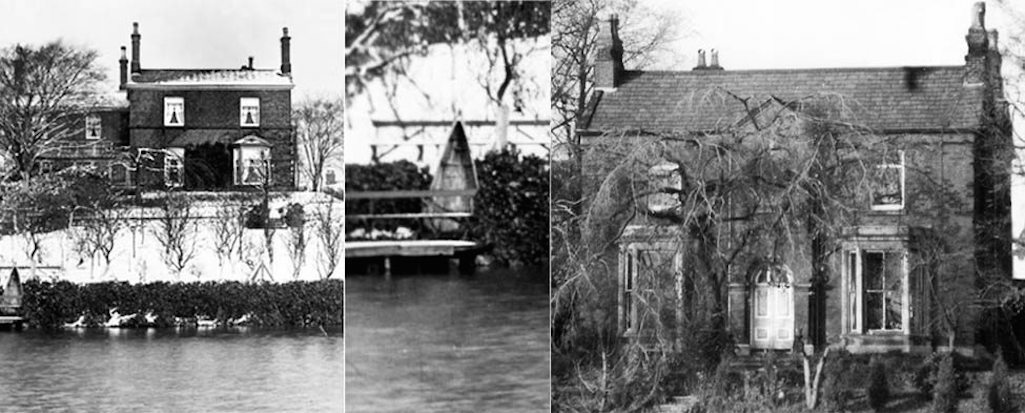
Left: Mill Lodge c.1910; Middle: Close Up of a rowing boat; Right: Millersdale - contributed by Frank Jones

Left: Mill Lodge c.1910; Middle: Close Up of a rowing boat; Right: Millersdale
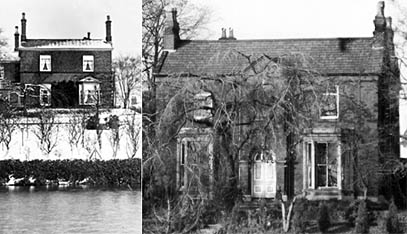
L-R: Mill Lodge c.1910 and Millersdale
Mill Lodge had a lovely curved drive up to the house, and it was sad to hear of its demolition due to mine subsidence. Millersdale itself was owned by the Abbott family, with Thomas Abbott having farmed Mill Farm in Leach Lane for many years. So he could now look directly across the Dam to its fields.

Letterhead of S. Royle & Sons who had stores in Peckers Hill Road - contributed by Harry Hickson

Letterhead of S. Royle & Sons who had stores in Peckers Hill Road, Sutton

Letterhead of S. Royle & Sons
This was in sharp contrast to the summer of 1945 in which one hot day in August, Alexander Duncan Smith aged six from Leach Lane, was playing with his friends around the Dam and decided to cool off at the waterfall end. The bottom of the dam at this point is concreted, and about six of them were hopping and splashing around in the water, when poor Duncan found himself out of this safe depth and off the concrete. The tragedy was that nobody could swim, including me standing on the bank, and I can see him now trying to dog paddle his way back, but going under the water as he did it.
I ran to get a stick but he couldn't grasp it, and eventually he didn't come up again. Everybody was screaming, and Mr Rennie who lived in the 'Wash', heard us and came running over, went in and brought Duncan up, but sadly he couldn't be revived. I had to go with my father to the Sutton Road Police Station and give a report to Inspector Tom Garlick who also lived at the station. This was followed by having to give evidence at the Inquest on the 13th of August, having been schooled by my policeman father on the procedures. That awful experience terrified me for years, but years later, having overcome these fears in the surf or pool, I still thought of Duncan and what a tragic waste of life that it was.
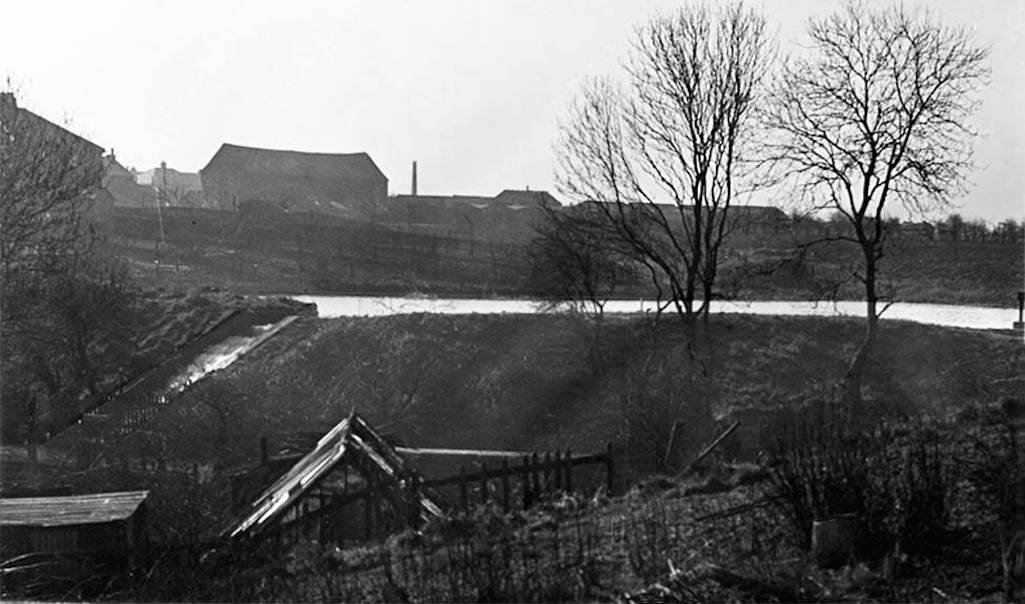
The Wash at Sutton Mill Dam about 1950 - contributed by Harry Hickson

The Wash at Sutton Mill Dam in Sutton, St.Helens c.1950

Wash at Sutton Mill Dam c.1950
Some years later, a few older lads had acquired redundant fuel tanks that used to be on the planes at Burtonwood Air Base, and were using them as canoes on the bottom Dam off Mill Lane. I went in one (still couldn't swim), with a lad named Derek Stokes out of Mill Lane. Although he had put a load of bricks in the bottom for ballast, they were still very unsteady because of their round bottoms. One of these tanks was used to block the flow of water in the brook about half way to the Wheatsheaf, and the bank was opened up to form quite a large safe swimming area. This attracted many children and the photo below, taken about 1947/8, shows that spot.
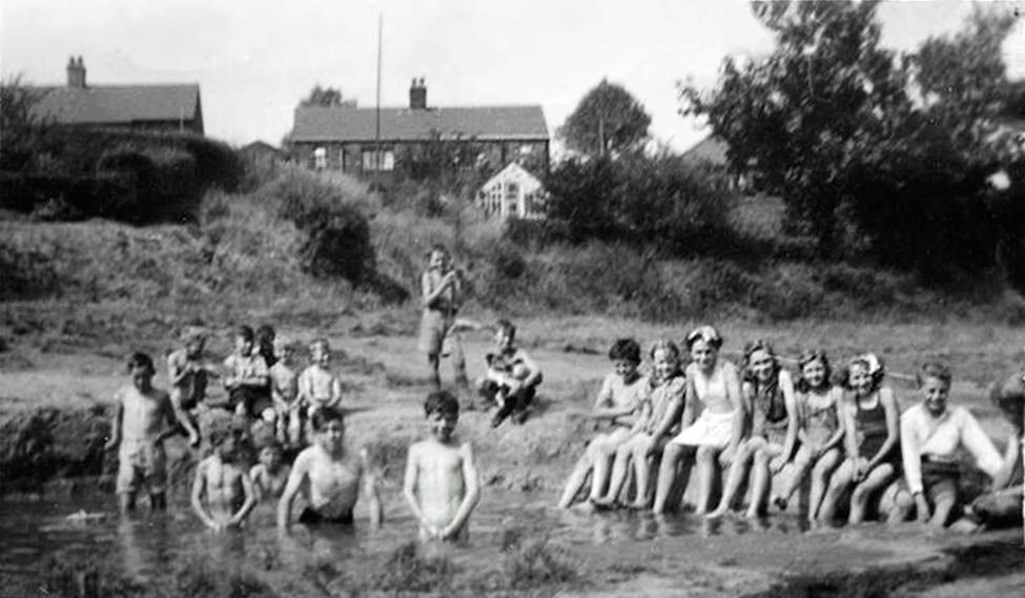
Having fun playing in the brook in Sutton Leach - contributed by Harry Hickson

Playing in the brook in Sutton Leach in Sutton, St.Helens

Fun playing in the brook c.1947/8
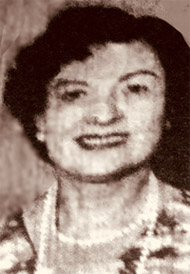
The Glover brothers' father was a Sergeant in the Royal Engineers and was killed early on in the war carrying out its most dangerous job, that of diffusing an unexploded German bomb. They lived at 119 Mill Lane with their mother's unmarried sister Veronica Ellen, who we knew as Nellie Anderton, a remarkable woman who I suppose was in her late 30s in 1945 and married in 1962. She was born with no arms, and I never ceased to be amazed at what she could do with her feet, absolutely fascinated when she was brushing her hair or knitting, and I even saw her thread a needle with cotton one day and sew a dress. It was all so natural to her, she would wave you into the room, no embarrassment at all, smoking a cigarette between her toes, and then place it in an ash tray situated on the high mantelpiece over the fire. She was a very attractive woman, who would put her lipstick on, wrap a green cape around her, and walk down to the Cooperative Society shop in Leach Lane with all the poise of a film star.
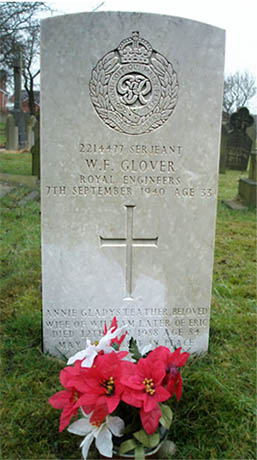
The American Air Force base at Burtonwood was very significant to Sutton and its surrounds because not only did you have the planes continually circling over on their landing flight path, but the Americans themselves liked to have a drink in the local pubs, coming in large numbers on service bicycles past Neill's into Sutton or up Reginald Road to the Wheatsheaf, Mill House, or the Bull & Dog. These pubs would be packed, of course, as they had many local customers apart from these extras, and if you were a pub landlord in this period you would be making good money. The Wheatsheaf's landlord, Cissie Rothwell, was married to the very colourful Joe Williams who had a lemon coloured two-seater American Dodge car, and actually gave my brother two shillings and six pence to clean it, which was a terrific amount at the time.
The Mill House landlord was Mrs Lawrence, assisted by her daughter Margaret, a South African chap named Fred Hall, and quite a few barmaids. She had a great business, in part due to the large singing room next to the car park and which was always packed, with smoke streaming out of the top windows. As lads we would listen to the singsongs / pianist, and occasionally climb onto the window ledge, and peer through the smoke to see who was on the microphone. It smelled awful to us! All the above pubs had bowling greens at their rear which were well used by regulars.
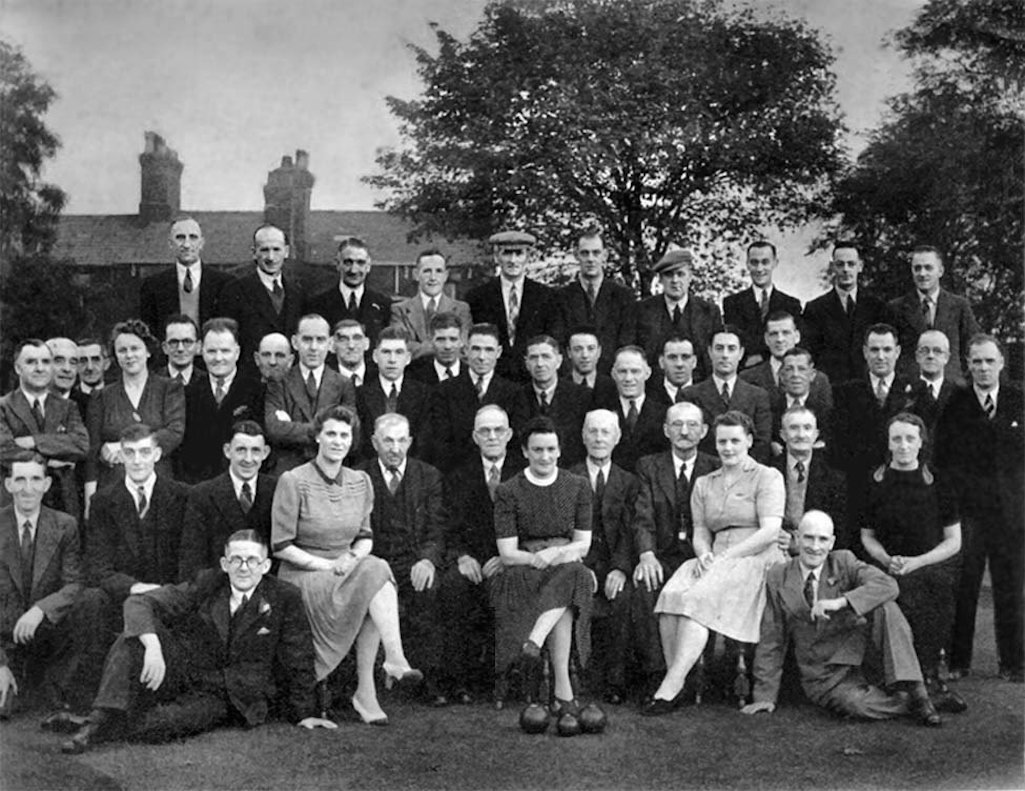
On the Mill House bowling green probably on VE day 1945 - contributed by Harry Hickson

On the Mill House bowling green in Sutton, probably on VE day 1945

On the Mill House bowling green
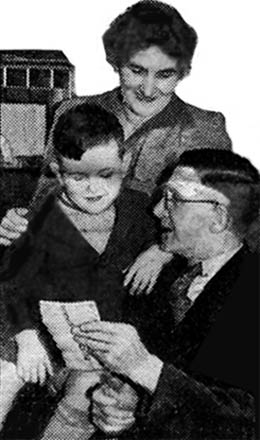
with their young grandson Chris
Mrs Lawrence was licensee and having been very successful at the Mill House, she went on to become the first landlord of the brand new Woodlands Hotel at Haresfinch. (Kath Burrows on behalf of her mother Joyce Bott, née Appleton, adds that the fourth from the right on the back row, wearing a flat cap, is Joyce's uncle, Harold Twist. The man seated on the right at the front behind the lady in the white dress is her grandfather, Hugh Twist. Both lived on Leach Lane.)
It was a great talking point when Mr Coffey won £75,000 on the pools, and very appropriate it was for him to win it, as he had been shot in the first war through his mouth and had difficulty talking and required his food to be chopped up. His wife was a lovely woman too, and after providing for their children they bought a new Daimler car, and had a beautiful bungalow built at Eccleston next to the Carmelite. Being a friend of youngest son John, I later had many rides in the Daimler and one day went to see the house, which was a real treat for me. However, Mr Coffey died virtually without living there, and the estate was then hit with death duties. Mrs Coffey not wishing to live there, moved back to live her remaining years in Mill Lane (on the corner of Old Mill Ave), less than two years after winning the money.
Next door to the Coffeys in Grimshaw Street, lived a colourful character named Stan Leyland, a local builder with a yard in Leach Lane near the Intersection Bridge. Stan's identity was enhanced by the fact that he kept an African monkey he called 'Chico', and who sat on his handlebars when he cycled down Mill Lane to his yard, or alternatively on the bonnet of his truck if he drove down. He had him for quite a few years entertaining everybody, and it became very close to Stan's mother. Its demise, however, came in spectacular fashion, when one day in the house for some strange reason it attacked Stan and sank its fangs in his leg and would not let go. Mrs Leyland ran out in the street shouting that "Chico is attacking our Stan", who by this time was losing a lot of blood, and dragging Chico (who was still hanging onto his leg) to the shed in the back yard, he grabbed an axe and killed it. Everybody in the area was passing this story around for a long time.
At the top of Grimshaw Street were the 'Bevin Huts', buildings erected to house the people recruited to cover the wartime labour shortages in the local pits, and after the war it was used to also house refugees from Europe. It was quite a large open access area, and we used to chat to some of the refugees when we went in to play snooker, which they didn't seem interested in.
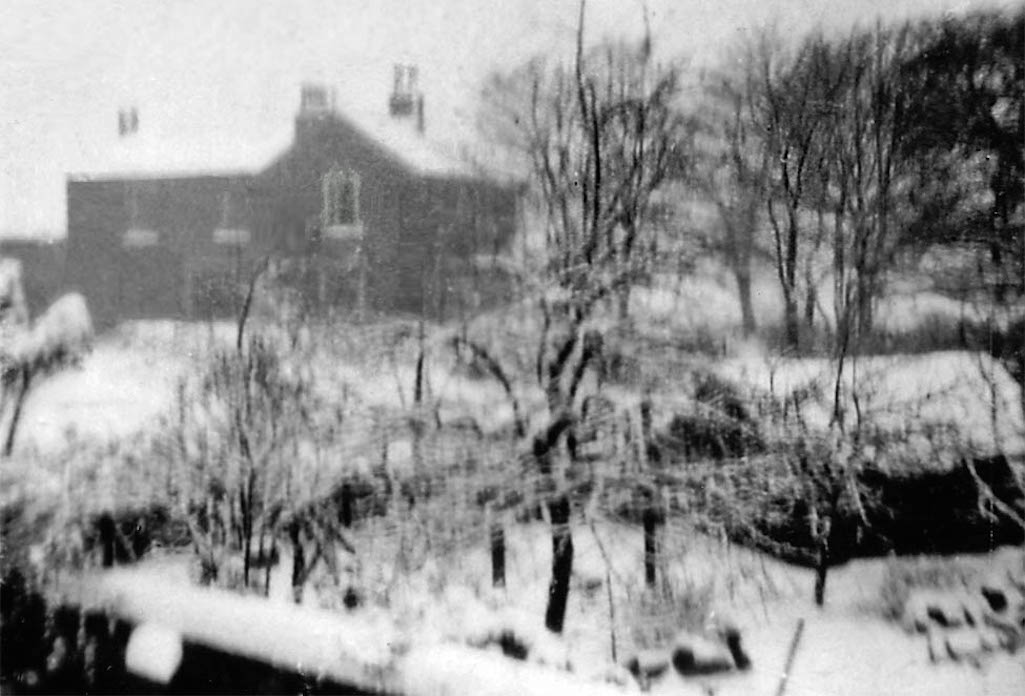
Catterall House on a snowy day in December 1951 taken from 114 Mill Lane by Lily Twist (head girl at Robins Lane school 1952)

Catterall House on a snowy day in 1951 taken from 114 Mill Lane by Lily Twist

A snowy Catterall House in 1951
In the 1940s, the St Helens to Widnes railway line was still operating both passenger and goods services. We used to go up Hawthorn Road, under the railway bridge and turn right to where the goods marshalling yard was. If you were lucky you might find an assembled collection of wagons waiting for a locomotive to come to take them, and be able to climb into the Guards Van for a look round. This was the area known as 'The Strappers', along a path that followed the Magnum factory and which was the shortest way to Clock Face Colliery.
It was at the top of this, just short of Gorsey lane, and behind the Almond brothers farm house that Gil Bond lived in a very large house called Abbotsfield. He was born in Haydock in 1885, before moving to Fingerpost around 1900, and eventually opening a Newsagents / Confectioners shop next door to the Parr Pavilion (Parr Dog) Cinema on the corner of Jackson and Traverse Streets. This premises however served to cover for his large, well managed 'illegal' bookmaking business which he continued to operate until betting became legal in 1961.
Gil Bond's betting operation was big by any standards for a provincial town like St Helens, but even though it was illegal, and racing had many 'dodgy' characters, he had a very good reputation. My Father used to say he was a very 'ethical' bookie, as he always honoured his losses, paid on time at the nominated odds, and he also paid the fines for his 'runners', who were all over the town districts, when they got caught by the police. He was also very generous to local charity causes, and extensively supported sporting local activities especially rugby teams, founding the well known UNO's Dab's team with his brother (the name coming from the brother's football coupon alias).
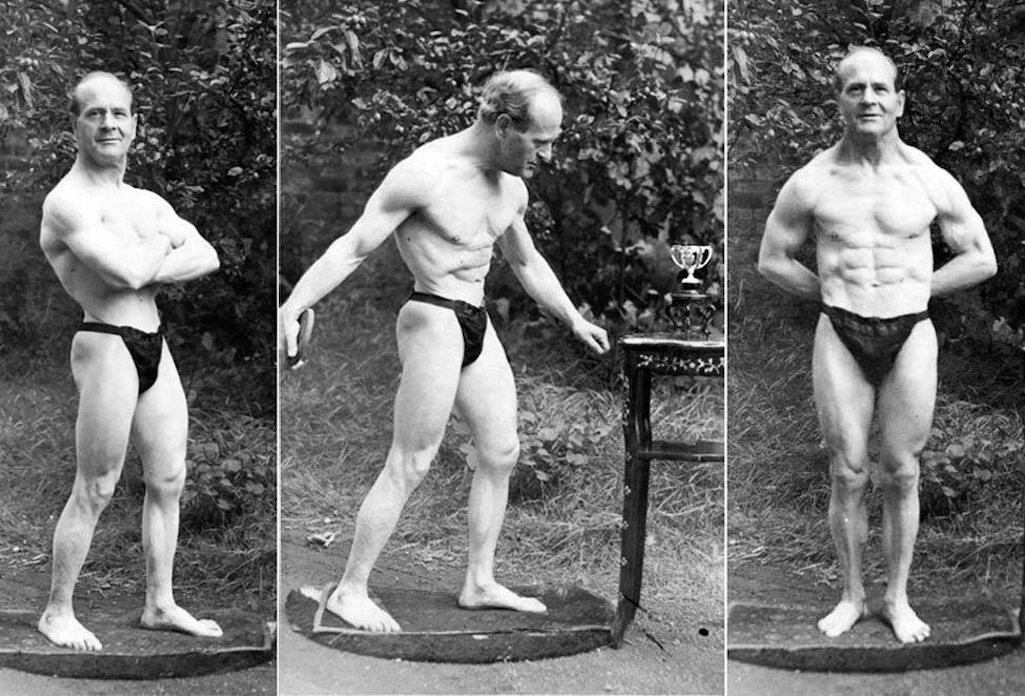
Three photographs of bookmaker and bodybuilder Gil Bond of Abbotsfield House - contributed by Harry Hickson

Pictures of bookmaker and bodybuilder Gil Bond of Abbotsfield House
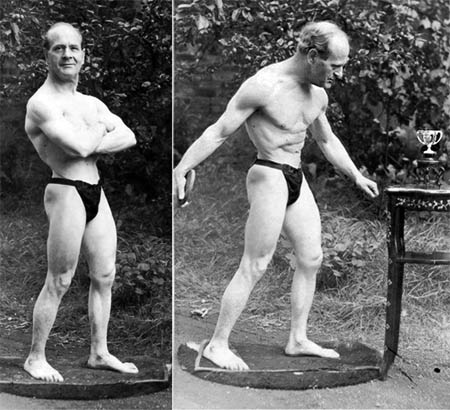
Bookmaker and bodybuilder Gil Bond
He talked to my brother for well over an hour on different aspects of bodybuilding, and he was impressed with his knowledge as well as his advice. Before leaving he gave him three photographs showing himself posing in his garden, which pictured him alongside a small table on which was a small silver cup. This he said was the cup he won for coming third in the Mr Gt Britain Body Building competition for the Master class (Seniors category of 40 years +), in 1946, when he would have been aged 61.
I was certainly very surprised when I saw the photographs, because meeting him for the first time in his clothes, he didn't present as a bodybuilder with the very good physique that he had, maybe it was his aged presentation, and a schoolboy with a lot to learn. My brother pointed out to me what he called the classic 'Bulldog' pose in the frontal photograph. "Can you see the bulldog face in his chest and stomach muscles?", he asked, and looking at it you can. My brother said that his good physique was developed totally on the basic natural techniques of the day, rather than the later repetitious use of weights and high protein supplements.
These included the Dynamic Tension techniques of Charles Atlas a famous American body builder, popular in the late 1930s, the use of wooden clubs (varying sizes / weight), which were swung in both hands to various arc patterns depending which muscle area you wanted to develop. The only weights as such that he used was the dumbbell to develop his biceps and upper back muscles, and his equipment was stored in a fairly large outbuilding that served as a gym in bad weather.
In spite of his senior years, the local teenagers were genuinely proud of Gil Bond's recognition in the bodybuilding world, but a new breed of young enthusiasts in California was emerging and like the WW2 swing/jazz music, news was being fast tracked to St Helens largely because of the American presence at Burtonwood. During the mid to late 1940’s you could cycle to the Air Base, and would see the Americans carrying out their bodybuilding routine’s inside/ outside the huts, with their American magazines starting to appear in the town.
In the UK’s Health and Strength magazine, photographs of Californian Steve Reeves, who become Mr Universe and later was the main star in many Gladiator films, were on the front page. Soon UK bodybuilders such as Yorkshire born Reg Park set out to emulate him by using new techniques in their training, and my brother said that Reg was a great inspiration to anybody interested in the sport.
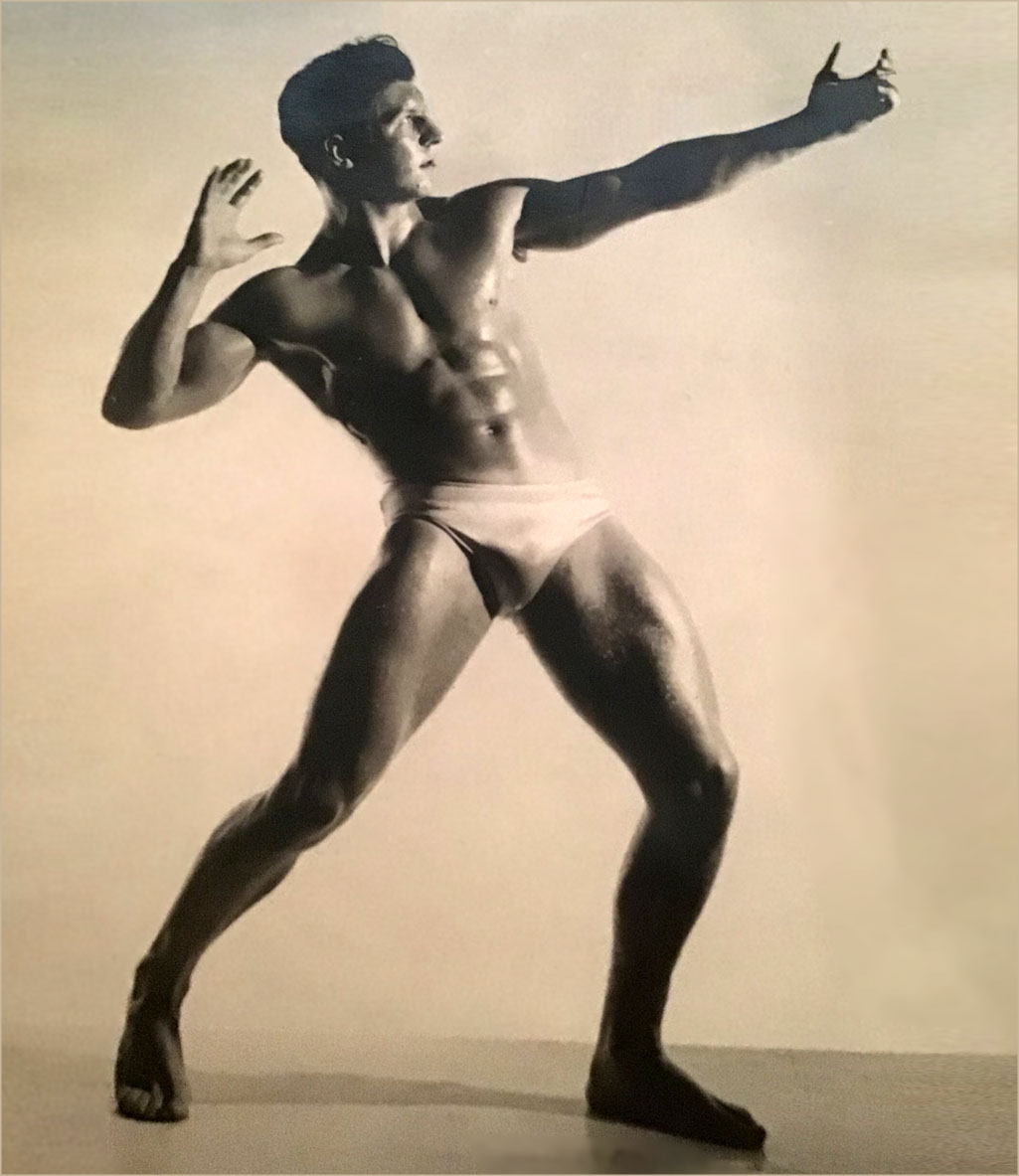
Don Fernley in a classic pose of the day, probably taken by Arthur Normington from Waterdale Crescent - contributed by Angela King

A young Don Fernley in classic pose probably taken by Arthur Normington

Young Don Fernley in a classic pose
Don entered the Regional North West Britain competition at Liverpool in 1950 and won his age category becoming Junior Mr North West Britain when he was just short of his 18th birthday. A girl named Mary Leonard from just down the East Lancashire Road at Norris Green also entered the same competition (prompted by her older sister Ellen), becoming the Miss Junior North West Britain, and she shared the stage at the award ceremony with Don, an association that lasted over 50 years following their later marriage.
Ellen Leonard had been participating in competitions for a number of years. having also won the same event, but she won the Miss Great Britain title in 1949 sharing the stage with the men's winner Reg Park. Both Don and his later wife Mary, went down to London for their 1950 finals where Don placed second in the Junior Mr Great Britain event, which my brother also attended, and he told me how friendly the now famous Reg Park was backstage to both Don and himself, which as I said earlier, was greatly valued by them both. Both the 1950 Liverpool and London competitions carried a big write up with photos in the Health & Strength magazine which was on the shelves of the local shops, so the local lads and girls soon got the word.
In the summer months Don and Mary along with quite a large group of similar minded bodybuilders would meet at the lovely New Brighton Open Air baths where they would carry out exercises, push ups and hand stands, along with group balancing acts, just the same as on the beaches of sunny California. Don and Mary, along with their two sons Alan and Leonard, migrated to South Africa in the 1960s returning to St Helens after about 20 years, having added to their family with a daughter Angela and son Paul. Don continued to train on a daily basis, with Mary passing away in 2006, and Don himself living until the age of 85, still with a shed full of weights. It was his very recent passing which has prompted this little rewrite of the contribution made by another Sutton lad this time to the world of Heath & Strength.
Every district of Sutton had its own respected doctor, and reference has been previously made to those in Sutton itself. Sutton Leach and surrounds had Dr John Unsworth, whose surgery was attached to his large house in Leach Lane (now a Vet). He was considered a very good Doctor and liked by young and old. One of his characteristics when he came to see me, perhaps in bed with Influenza, was to completely ignore me as he came into the bedroom. He would then walk over to the window and talk about the view with my mother for about three to four minutes. He did it every time he came, over a number of years, so you could say it was part of his bedside manner. Sadly he died relatively young (about 60, I think) and the lovely Irish Dr Rory O'Donnell took over the practice.
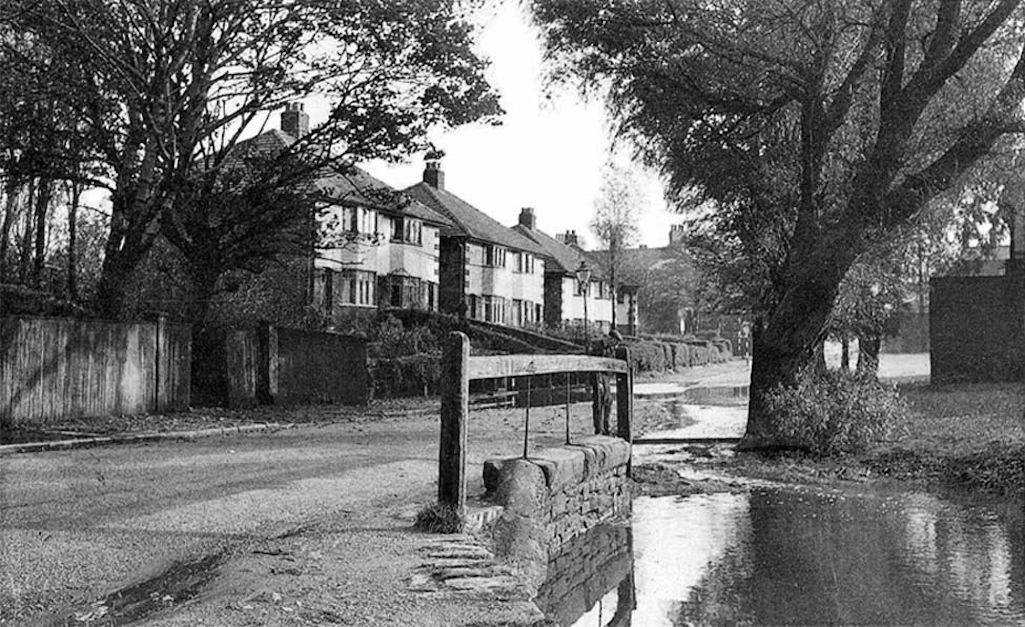
Mill Lane by the Wheatsheaf Hotel which still floods to this day - contributed by Harry Hickson

Mill Lane by the Wheatsheaf Hotel in Sutton which still floods to this day

Mill Lane by the Wheatsheaf Hotel
There always was some flooding after continual rain at the Wheatsheaf area, but this got considerably worse as subsidence dropped the bank levels along the brook and greater volumes of water resulted. On a number of occasions, the Council had to erect a series of planked walkways for people to pass down Mill Lane opposite the Wheatsheaf, whose cellars would be flooded. The photo above shows the area that flooded, where the planks were, with most of the houses shown having subsidence damage to varying degrees. With big floods the water level would be above the coping stones on top of the bridge and there would be corresponding high levels at St Anne's Reservoir.
On the left hand side of the picture you can just make out a wooden gate which was the entrance to Cherwell House (which was known as Brooklands in the 1800s), a large detached house that stood on a hill in large grounds. It was here that the quite famous (certainly in St Helens), Rebecca Riddell, or 'Becky' as she was known locally, lived and who was, I believe, an outstanding singer who performed many lead roles at the Theatre Royal in shows from Gilbert and Sullivan etc. She was married to a Mr Jenkinson who was the Science Master at Newton Grammar School.
The brook in the photo after it had run under Mill Lane, fed into the 'Bottom Dam' and over the years whilst in flood had deposited quite a bit of silt along the edge of the Jenkinson garden's boundary rail / fence. This was to the extent that it had formed an island about 20 yards long and 8 yards wide. With the 'canoe' type boats mentioned previously, you could more safely get into them off the island, than from the wooden decking of the Pump House that was in deep water halfway round the dam.
To get to the island however you had to first climb over the bridge, and then walk along the stone wall that supported the iron railing around Jenks's boundary for about 20 yards, before finally jumping down onto the island. In the lovely summer nights, Becky Riddell would invite her theatrical friends and they would sit on the lawn drinking and singing etc. To see schoolboys negotiating this passage to the island was just too much for her (she thought we were spying on her, I think), and she would come across with her husband and hit our hands with a strap as we held on to the railing. The dam in the centre of its length was about 50 yards wide and it curved round the back of houses in Belvedere Avenue before discharging itself down a waterfall and then it travelled under the railway line into the smaller Gerrards Lane dam, followed by the Monastery Dam.
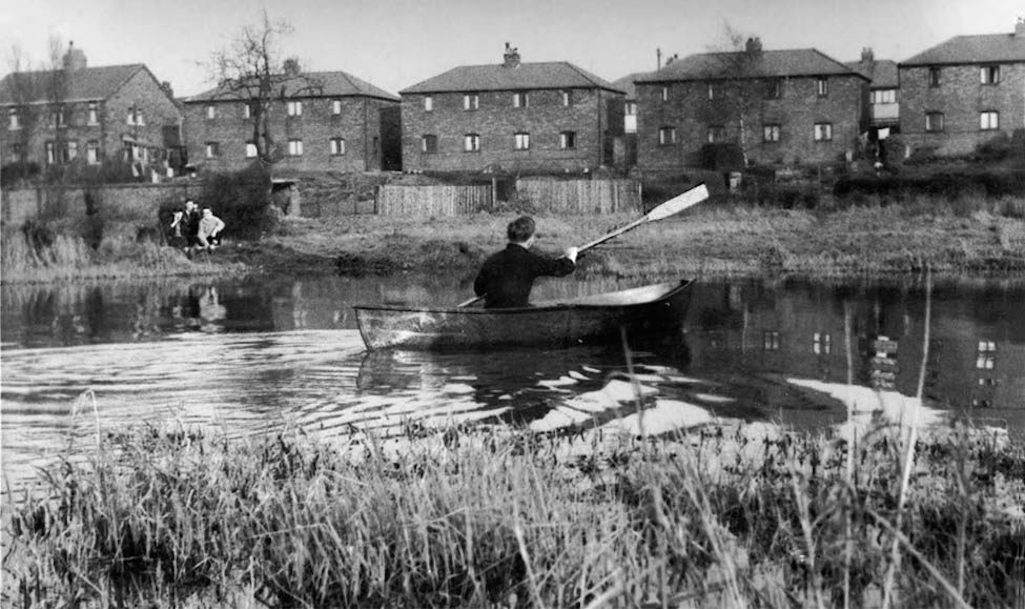
All the land to the right of the shelter was that under cultivation by local residents during the war. The boys on the far bank are in the approximate area of a farm house with its barn that was shown on an 1840 Tithe map. Then it was owned by an Edward James Pemberton and occupied by William Gee. The farm had an access track from Mill Lane next to the present-day Wheatsheaf Hotel, and another that ran up to Leach Lane at about the 5th house from the left. The 1929 photo in the Sutton Shops page shows Mrs Wells popular sweet shop, which is the same building. In the 1940s all this was gone, but we could still see remnants of the building's foundations.
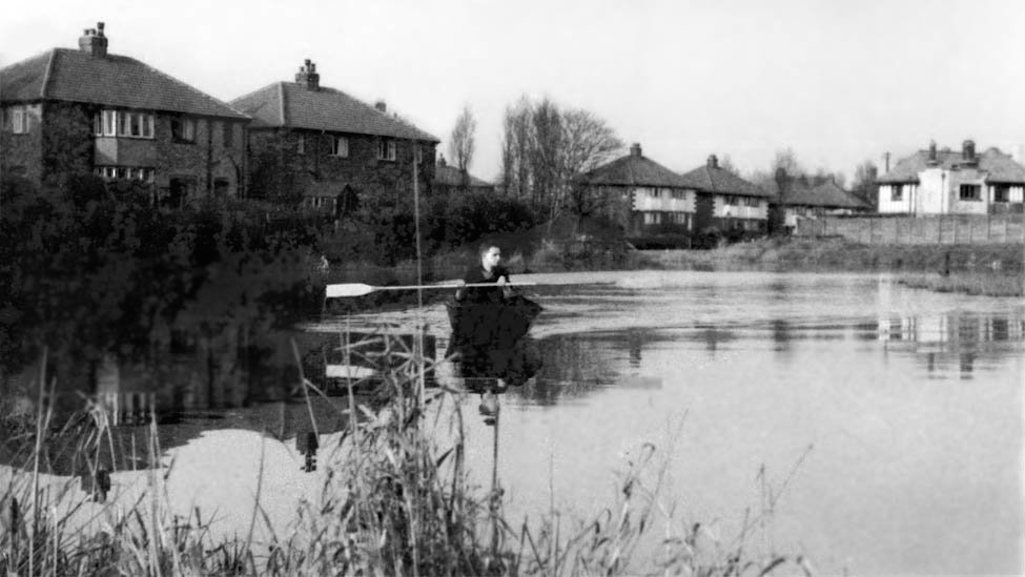
The bowling green was a much later feature for the hotel being built after the war, and the original fence was much lower allowing you to see the bowling. The house prior to the end on the left is no 87 Mill Lane, and was occupied in the 1940s by Mr and Mrs Travers, who are shown in the New Street Vicarage photo in the 'Can You Help?' section. I cannot put a name to the lad in the boat, but certainly the view in both photographs can no longer be seen due to the significant growth all along the brook from the 'Wash' to Mill Lane, no doubt aided by its cultivation history.
So life for the young lads and girls of Sutton in the 40's / 50's was pretty good. I certainly enjoyed it all, with just the one exception, but whilst many of those opportunities have long gone, some features are still around. However it's a different world today for children, sad to say most are missing out on the characters that were around, and who your way of life brought you into contact with. What more could you ask for than a whole day's adventure, sustained by a bottle of water, and a 'Jam Butty'?
